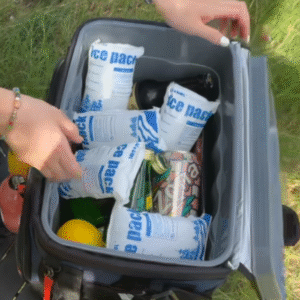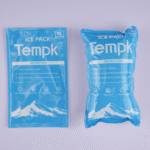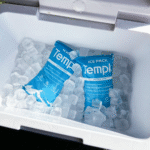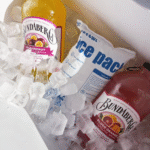Dry Ice Pack and Dry Ice Bricks Shipping: Optimizing Cold Chain Logistics in 2025
Dans la logistique de la chaîne du froid d'aujourd'hui, maintaining optimal temperatures is essential when shipping perishable goods such as seafood, viande, médicaments, et vaccins. Glace sèche, in the form of either dry ice packs or dry ice bricks, provides an efficient and effective cooling solution for long-distance shipments. This article delves into the differences, avantages, and best practices for shipping with dry ice packs and bricks in 2025, focusing on maximizing efficiency and compliance with evolving regulations.
-
Que sont packs de glace sec and dry ice bricks, Et comment fonctionnent-ils?
-
How do you calculate the right amount of dry ice for your shipment?
-
What are the best practices for shipping perishable goods using dry ice?
-
What safety measures must you follow when shipping with dry ice?
-
How do dry ice bricks compare to gel packs and other refrigerants?
What are Dry Ice Packs and Dry Ice Bricks?
La glace sèche est un dioxyde de carbone solide (Co₂) that sublimates at an extremely low temperature of -78.5°C (-109.3°F). It is used to maintain frozen and chilled conditions for temperature-sensitive goods during transport. Dry ice packs and dry ice bricks, while both effective in cooling, serve different purposes depending on the shipping requirements.
Packs de glace sec
Dry ice packs are flexible, lightweight sheets that are often used for small to medium-sized shipments. They are typically filled with small pellets of dry ice and encased in materials like plastic or foam. Dry ice packs are ideal for short-duration shipping and can be easily arranged in packaging to fit various sizes.
Dry Ice Bricks
Dry ice bricks, d'autre part, are large blocks of dry ice that offer a more concentrated cooling effect. These are ideal for longer shipments, providing extended cooling durations. The rigid form of dry ice bricks allows for more stable temperature control during longer journeys.
| Type of Dry Ice | Description | Cas d'utilisation idéal |
|---|---|---|
| Packs de glace sec | Flexible, lightweight sheets | Small to medium shipments requiring flexibility |
| Dry Ice Bricks | Rigid blocks, sublimation plus lente | Large shipments requiring extended cooling |
How Do Dry Ice Packs and Dry Ice Bricks Maintain Cold Temperatures During Shipping?
Dry ice achieves its cooling power through sublimation, where it transitions from solid to gas without becoming liquid. This process absorbs heat, effectively lowering the surrounding temperature.
Sublimation Process and Cooling
-
Packs de glace sec: Sublimate at -78.5°C, providing moderate cooling for 24 à 48 heures. Their flexibility allows them to be easily distributed throughout the shipping container, maintaining consistent cold temperatures for smaller shipments.
-
Dry Ice Bricks: Sublimate at the same temperature, but their larger mass and solid form cause them to release CO₂ gas at a slower rate, allowing them to maintain cold temperatures for longer, making them ideal for shipments lasting up to 72 heures ou plus.
| Dry Ice Type | Ideal Duration of Use | Ideal Shipment Type |
|---|---|---|
| Packs de glace sec | 24-48 heures | Expéditions à courte distance, marchandises périssables |
| Dry Ice Bricks | 72 heures ou plus | Expéditions à longue distance, bulk products |
Meilleures pratiques d’utilisation de la glace carbonique dans le transport maritime
Emballage approprié
-
Isolation: Use high-quality insulated boxes like Styrofoam or polyurethane foam to reduce heat transfer. Ensure the packaging allows for CO₂ gas to escape, as dry ice sublimates into gas.
-
Ventilation: Dry ice must be packed in containers that allow the CO₂ gas to vent to avoid pressure buildup, which could lead to the rupture of packaging.
Calculating the Right Amount of Dry Ice
The quantity of dry ice required depends on factors such as the shipment’s duration, la qualité de l'isolation, and the ambient temperature during transport. En règle générale, for a 24-hour shipment, 0.5 kg of dry ice per kg of the product should be used. Pour des durées plus longues, increase the amount of dry ice by 1.5 times to account for sublimation rates.
Étiquetage et documentation
Lors d'un envoi avec de la neige carbonique, it’s crucial to comply with regulatory requirements:
-
Proper labeling with “Dry Ice” or “Carbon Dioxide, Solide"
-
UN1845 shipping number
-
Classe 9 étiquette de danger
-
The net weight of dry ice in kilograms
These labeling requirements are essential for ensuring safe and compliant transport.
Safety and Regulatory Compliance for Dry Ice Shipping
La glace sèche est classée comme une matière dangereuse (Classe 9, UN1845) and requires adherence to specific shipping regulations. Compliance with IATA (Association internationale des transports aériens) et point (Ministère des Transports) guidelines is mandatory to ensure safe shipping.
Key Compliance Requirements:
-
Conditionnement: Dry ice must be transported in vented packaging, such as corrugated cardboard boxes with foam insulation.
-
Documentation: Include a proper air waybill with the shipping details, including the weight of dry ice.
-
Manutention: Always wear insulated gloves and safety goggles when handling dry ice to prevent injury from frostbite or eye exposure.
Glace sèche vs. Packs de gel: Which Is Better for Your Shipment?
Dry ice is often compared to gel packs, especially for shipments that need to be chilled but not frozen. Cependant, dry ice has several advantages for specific needs:
Glace sèche
-
Températures extrêmement basses: Dry ice can keep frozen goods solid, unlike gel packs, which are not designed for subzero temperatures.
-
Durée plus longue: Dry ice bricks, en particulier, provide longer cooling durations than gel packs.
Packs de gel
-
Safer and Easier to Handle: Les packs de gel sont non toxiques, réutilisable, and require no special handling. Cependant, they cannot achieve the ultra-low temperatures necessary for frozen goods.
-
Shorter Cooling Period: Gel packs are ideal for chilled items but not suitable for extended freezing.
| Méthode de refroidissement | Cas d'utilisation idéal | Pros | Inconvénients |
|---|---|---|---|
| Glace sèche | Aliments surgelés, biologique | Températures ultra-faibles, long duration | Nécessite une manipulation spéciale, conformité réglementaire |
| Packs de gel | Produits frais, meals | Plus sûr, réutilisable, non toxique | Limited temperature range, durée plus courte |
Environmental Impact and Sustainability of Dry Ice Shipping
Dans 2025, sustainability is a key concern in the cold chain logistics industry. Dry ice offers some environmental advantages but also has its drawbacks.
Pros of Dry Ice:
-
Reclaimed CO₂: Many suppliers produce dry ice from CO₂ captured during industrial processes, reducing emissions.
-
No Water Waste: Dry ice sublimates directly into gas, leaving no water residue and reducing waste.
Défis:
-
CO₂ Release: Although CO₂ is reclaimed, it is released into the atmosphere during sublimation.
-
Energy Use: The production of dry ice requires energy, typically from non-renewable sources.
Sustainability trends include the use of biodegradable refrigerants, IoT-enabled temperature monitoring, and smart packaging solutions.
Questions fréquemment posées (FAQ)
Q1: Combien de temps dure la glace sèche pendant l'expédition?
La glace sèche dure généralement entre 18 à 72 heures, Selon le type (pack or brick), isolation, et les conditions environnementales.
Q2: La glace sèche peut-elle être utilisée pour les expéditions internationales?
Oui, dry ice can be shipped internationally, but it must comply with international shipping regulations, including those set by IATA and DOT.
Q3: What are the safety precautions for shipping with dry ice?
Assurer une bonne ventilation, use appropriate protective gear, and comply with all labeling and documentation requirements.
Conclusion et recommandations
Dry ice packs and dry ice bricks are vital for cold chain logistics, offering solutions for different shipment sizes, durée, et les exigences de température. By understanding the differences between these options, calculating the appropriate amount of dry ice, and adhering to safety and regulatory guidelines, businesses can ensure the safe and efficient transport of temperature-sensitive goods.
Étapes suivantes:
-
Consulter des experts to choose the right dry ice solution.
-
Invest in high-quality packaging Pour améliorer le contrôle de la température.
-
Stay updated on regulations and sustainability trends to improve your cold chain logistics.
À propos du tempk
Et tempk, we specialize in providing cutting-edge cold chain logistics solutions, including dry ice packs and bricks. Our products ensure your goods remain safe and fresh during transport, with a focus on sustainability and regulatory compliance.
Appel à l'action: Contact Tempk today to discuss how our dry ice solutions can enhance your logistics operations.
























